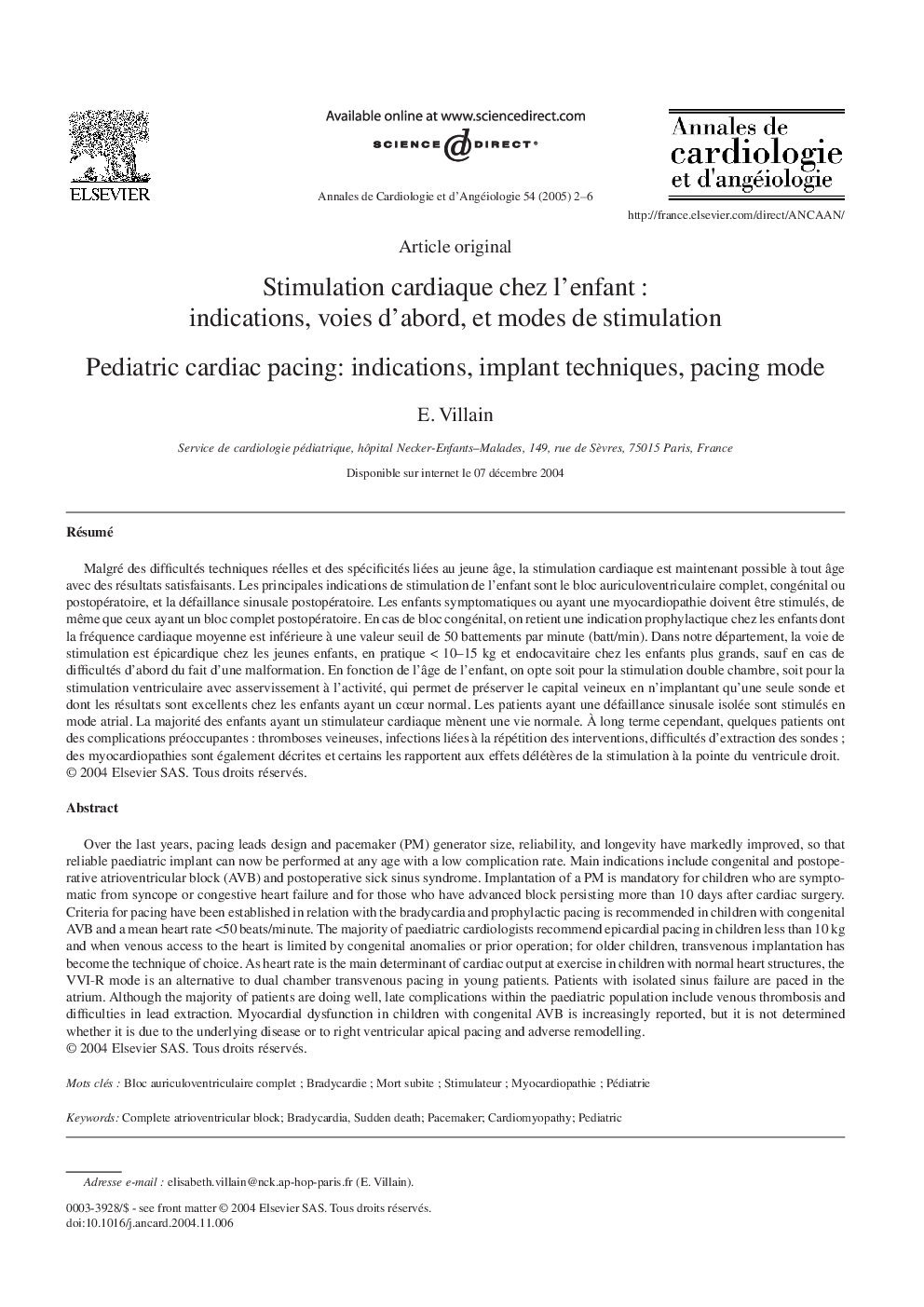| Article ID | Journal | Published Year | Pages | File Type |
|---|---|---|---|---|
| 9157237 | Annales de Cardiologie et d'Angéiologie | 2005 | 5 Pages |
Abstract
Over the last years, pacing leads design and pacemaker (PM) generator size, reliability, and longevity have markedly improved, so that reliable paediatric implant can now be performed at any age with a low complication rate. Main indications include congenital and postoperative atrioventricular block (AVB) and postoperative sick sinus syndrome. Implantation of a PM is mandatory for children who are symptomatic from syncope or congestive heart failure and for those who have advanced block persisting more than 10 days after cardiac surgery. Criteria for pacing have been established in relation with the bradycardia and prophylactic pacing is recommended in children with congenital AVB and a mean heart rate <50 beats/minute. The majority of paediatric cardiologists recommend epicardial pacing in children less than 10Â kg and when venous access to the heart is limited by congenital anomalies or prior operation; for older children, transvenous implantation has become the technique of choice. As heart rate is the main determinant of cardiac output at exercise in children with normal heart structures, the VVI-R mode is an alternative to dual chamber transvenous pacing in young patients. Patients with isolated sinus failure are paced in the atrium. Although the majority of patients are doing well, late complications within the paediatric population include venous thrombosis and difficulties in lead extraction. Myocardial dysfunction in children with congenital AVB is increasingly reported, but it is not determined whether it is due to the underlying disease or to right ventricular apical pacing and adverse remodelling.
Keywords
Related Topics
Health Sciences
Medicine and Dentistry
Cardiology and Cardiovascular Medicine
Authors
E. Villain,
